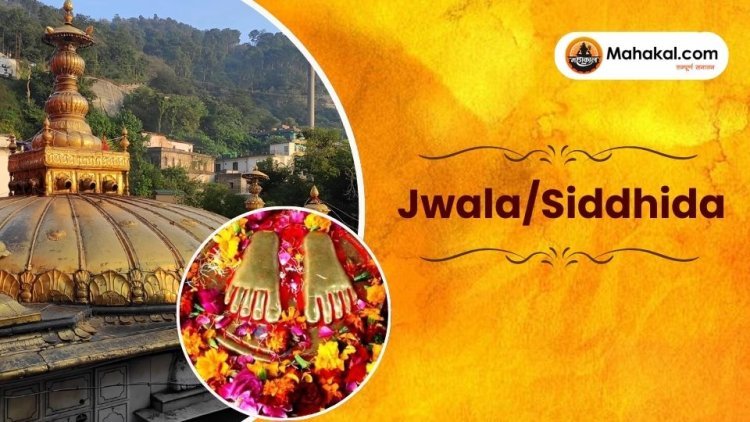Jwala Ji Temple Kangra: The Eternal Flame of Faith
Discover the sacred Jwala Ji Temple (Siddhida) in Kangra, Himachal Pradesh, famous for its eternal flame, legends of Goddess Sati, and divine blessings.

Nestled in the picturesque valleys of Kangra, Himachal Pradesh, lies one of India’s most revered and spiritually significant shrines – the Jwala Ji Temple, also known as Siddhida. Unlike most temples where deities are worshipped in idols or stone carvings, Jwala Ji is unique for its eternal flames that mysteriously emerge from fissures in the rock. These natural flames, believed to represent the nine forms of Goddess Durga, have been burning for centuries without any source of fuel, making the temple a profound symbol of divine power.
The Legend of Jwala Ji
According to Hindu mythology, the temple is closely associated with the story of Sati. When Sati immolated herself after her father Daksha insulted Lord Shiva, Lord Vishnu scattered her body parts across the Indian subcontinent to calm Shiva’s rage. These sites later became known as the Shakti Peethas. It is believed that Sati’s tongue fell at Jwala Ji, and the eternal flames here symbolize her burning power.
The temple is called Siddhida, meaning “the granter of wishes,” because devotees believe that sincere prayers at this shrine are always fulfilled.
Architecture and the Eternal Flame
The temple’s architecture reflects a mix of Mughal and Rajput styles, with a simple yet spiritual aura. The sanctum sanctorum houses the sacred flames that emerge from the earth through cracks in the rock. There are nine flames, each dedicated to different goddesses: Mahakali, Annapurna, Chandi, Hinglaj, Vindhyavasini, Mahalaxmi, Saraswati, Ambika, and Anjana.
What fascinates scientists and believers alike is the inextinguishable nature of these flames. Despite efforts in the past, including those by Mughal emperor Akbar who tried to douse them, the flames have continued to burn steadily.
Spiritual Significance
Jwala Ji is regarded as one of the 51 Shakti Peethas in India and holds a special place in the hearts of devotees. Pilgrims believe that offering prayers here removes obstacles, fulfills wishes, and grants spiritual liberation. The temple is especially crowded during Navratri, when thousands of devotees from across the country arrive to seek blessings.
Festivals and Rituals
-
Navratri: The grandest celebration, with special rituals, bhajans, and vibrant decorations.
-
Aarti of Flames: A mesmerizing ritual where priests offer prayers to the eternal flames, creating a deeply spiritual atmosphere.
-
Langer/Community Kitchen: Like many shrines in North India, Jwala Ji also hosts langars where devotees are served simple, blessed meals.
Nearby Attractions in Kangra
Visiting Jwala Ji is not just a spiritual journey but also a chance to explore the natural and cultural beauty of Kangra. Some nearby attractions include:
-
Kangra Fort – A historic fort offering insights into the region’s rich past.
-
Baijnath Temple – Dedicated to Lord Shiva, known for its architectural elegance.
-
Chamunda Devi Temple – Another revered Shakti shrine.
-
Dharamshala & McLeodganj – Perfect for those who want to combine spirituality with serene mountain landscapes.
How to Reach
-
By Air: The nearest airport is Gaggal Airport (Kangra Airport), about 50 km away.
-
By Train: The nearest railway station is Kangra Mandir Railway Station, around 20 km from the temple.
-
By Road: Well-connected by buses and taxis from Dharamshala, Kangra, and other major cities in Himachal Pradesh.
The Jwala Ji/Siddhida Temple in Kangra is not just a place of worship but a living miracle of faith and nature. The eternal flames continue to inspire awe, devotion, and curiosity, reminding devotees of the boundless energy of the Divine Mother. For spiritual seekers, pilgrims, and even curious travelers, a visit to this sacred shrine is truly an unforgettable experience.
What's Your Reaction?














